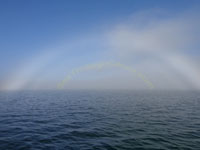Places to Canoe/Kayak
Fort De Soto
Pictures, Videos and Information
Location
Fort De Soto is about 5 minutes south of St. Petersburg, FL and is in Pinellas County
Map of Fort De Soto
Description
Fort De Soto is a county park, not a state park. Fort De Soto is comprised of a group of small islands and keys just 5 minutes south of St. Petersburg, FL. There are a
few deep channels in and around the Fort but most of the park is composed of islands surrounded by shallow flats from 1 to
5 feet deep. The islands range in size from about 75 feet across to Fort De Soto itself which is a couple miles long. The tidal currents
can be strong in some places but it's a great spot to take a canoe or kayak. There is a very large boat ramp right at the entrance to the
park on Madelaine Key. There is also a large campground and RV parking at Fort De Soto. The park has 2 short piers extending into the gulf
from the beach. There is a canoe or kayak rental place at the park.
The park is a haven for all sorts of animals. It's a great place to go to see dolphin and manatee. Plenty of other marine life
abound like manta rays, sting rays, conchs, horseshoe crabs, and many species of birds. The fishing is also usually really good at Fort De Soto. The most
common species caught are Flounder, Speckled Trout, Redfish, Spanish Mackerel, Snook & Pompano.
There is a "pass" on each side of the park. The pass on the south side is the Egmont Key Pass which has very deep water and is a
shipping channel. The pass on the north side is Bunces Pass and is a shallow water pass. The water at Bunces Pass is about 30 feet but there are
some shallow spots so be careful if you're in a bigger boat. Straight out in the gulf about a half mile from Bunces Pass is an island about 100 feet
across and a few feet high. There are no trees or bushes on this island and if the tide is high the waves can wash over it. There is a flat (shallow water) almost
a mile long and about 2-3 feet deep on one side of this island. It is a long narrow flat. You can not wade out to the flat or the island though because there is
deep water between the flat and the beach. It's a great spot to pull up your canoe or kayak and wade around and look at sea life, look for shells, or just soak
in the sun.
Dolphins can be seen at the park all year long. There are more dolphins in the winter than in the summer. Manatees can be seen in the park for 9-10 months out of the year. If you know where to look, you will always be able to find manatees at the park during those 9 or 10 months. There are also a lot of sea turtles at Fort Desoto, but they are very wary and you won't see them often if you're in a boat with a motor. The best way to spot sea turtles is to just pick an area about 7-14 feet deep and just float for about 20 minutes. If there are any turtles in the area, they will surface in that time. Very often you will hear them surface for air before you see them, so keep your ears open. There is a company that offers tours at Fort DeSoto in See Through Canoe brand clear canoes/kayaks. They specialize in connecting people to awesome manatee encounters. The company is called See Through Adventures.
Please be respectful and don't harass the Manatee. Don't paddle right up on them. Get a reasonable distance and let them come to you. Never chase the
Manatee either. If they are swimming away from you, let them. You can be fined for harassing them and you never know when a sheriff or fish and game or some other wildlife management
at Fort De Soto may be watching you with binoculars from a boat or shore.
Pictures

Bunces Pass at Fort De Soto


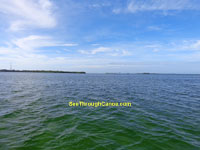
Picture of an Egret at the place I launched the canoe



The bridge that leads to Fort De Soto Park

Sunshine Skyway Bridge

Big Conch I found on a sandbar at the park

Sea Urchin I found in the water near an island

Sea Cucumber

Sea Urchin I found in the water near an island




Picture of some of the manatee that have followed me in the canoe
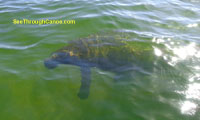

Lots of sand dollars on the sandbars

All of the black spots you see in this picture are living sand dollars. For those of you that don't know, sand dollars are black while they are alive. It is only when they die and the sun bleaches them out that they turn white.
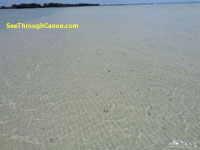
Plenty of other sea shells in the water

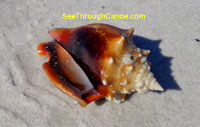
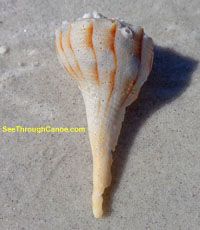
Baby Horseshoe Crab
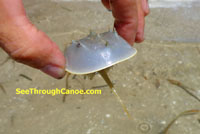

One of many small islands at Fort De Soto

Very cool "white rainbow" we saw canoeing at Fort De Soto on a foggy day
